Olympic venues that were abandoned and left to rot
Olympic-sized failures

Associated Press/Alamy Stock Photo
With the Paris Olympic Games underway, the cost of hosting arguably the planet's most famous sporting event has once again come under scrutiny, especially after the COVID-19 pandemic delayed the Games for a year and left Japan's purpose-built stadiums empty of crowds.
Even in normal times, the economic benefits of hosting the Olympics, such as infrastructure and tourism, are often short-lived and may not outweigh the huge price tag of building stadiums and other venues. Worse still, many of these sites are never reused and are left to decay.
Read on to discover the famous Olympic stadiums and sites that became white elephants, ranked by how much they cost to build.
All dollar amounts in US dollars unless otherwise stated. Final Olympic costs adjusted for inflation.
Sarajevo, Bosnia and Herzegovina, 1984, cost: unknown

Giles Clarke/Getty Images
It's hard to pinpoint exactly how much the 1984 Sarajevo Winter Olympics, as the Yugoslavian dinar experienced hyperinflation after the Games. However, we do know that it exceeded its budget by 118%, according to the Oxford Olympics Study 2016.
Many of the venues, such as this abandoned hotel constructed for visitors, were subsequently torn apart during the Siege of Sarajevo a decade later.
Sarajevo, Bosnia and Herzegovina, 1984, cost: unknown

ELVIS BARUKCIC/AFP via Getty Images
As far as abandoned Olympic venues go, the remnants of Sarajevo's Olympic Games are among the spookiest. As soldiers headed for the mountains surrounding the city during the Siege of Sarajevo, they used the Olympic facilities as hideouts and stored weapons there.
The bobsled track (pictured) was used as an artillery stronghold, and you can still see holes drilled by troops in the walls, along with graffiti. The ski jumps were also damaged in battle, and today they remain derelict and unused.
Sarajevo, Bosnia and Herzegovina, 1984, cost: unknown

ELVIS BARUKCIC/AFP via Getty Images
Meanwhile, an area next to the Zetra Olympic Hall became a poignant cemetery. The Siege of Sarajevo led to as many as 12,000 deaths, according to some estimates, which meant that makeshift graveyards had to be constructed around the city.
Today, some of the Olympic venues have been restored or repurposed, but the conflict in the country destroyed much of its legacy.
Montreal, Canada, 1976, cost: $1.6 billion (£1.2bn)
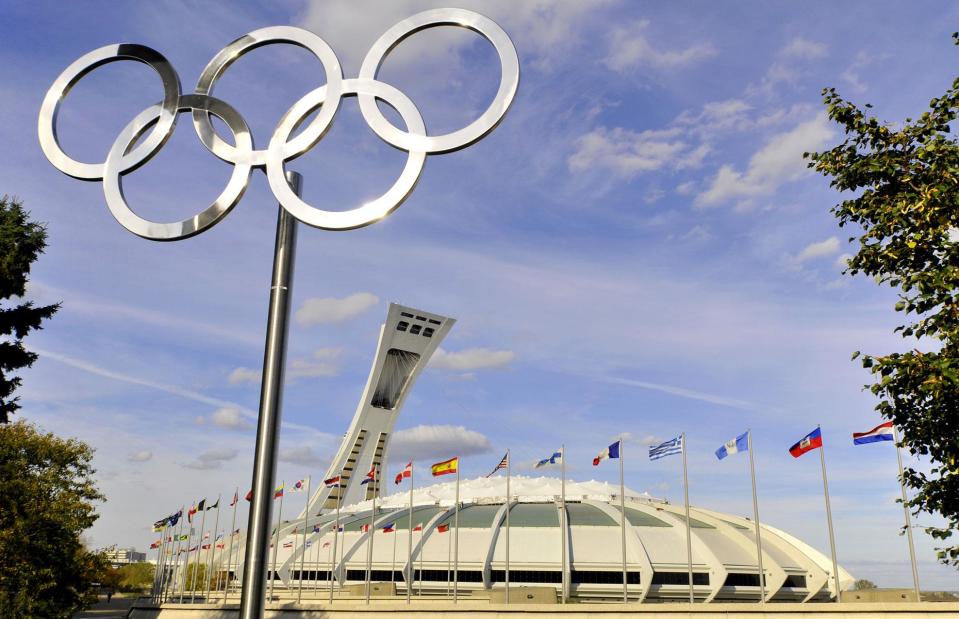
Meunierd/Shutterstock
Montreal's Olympic Stadium is considered one of the world's most notorious white elephants. Following problem after problem, the stadium wasn't even finished in time for the 1976 Summer Games despite its massive price tag.
In 2006, the cost of the stadium was estimated at CA$1.47 billion, the equivalent of $1.6 billion (£1.2bn) in today’s money.
Montreal, Canada, 1976, cost: $1.6 billion (£1.2bn)
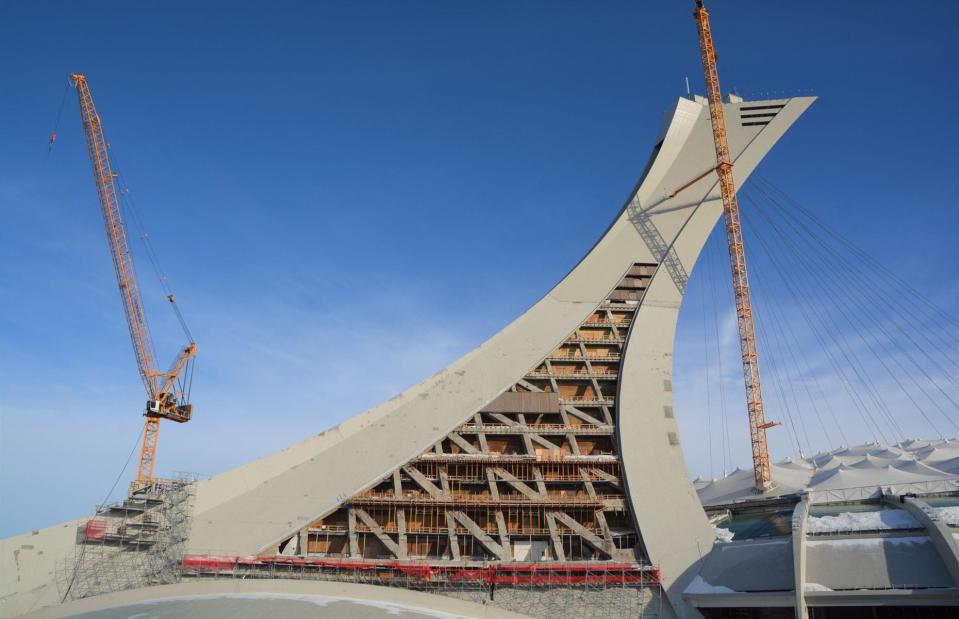
Meunierd/Shutterstock
Work pressed on until 1987 when the roof was finally completed, and even that wasn't fit for purpose – the structure was damaged several times, and a portion collapsed in 1999. The stadium has attracted tenants on and off over the years but hasn't had a permanent resident since 2004, adding to its white elephant reputation.
However, reports claim that the cost of dismantling it would be greater than leaving it open for occasional use.
Montreal, Canada, 1976, cost: $1.6 billion (£1.2bn)

GEOFF ROBINS/AFP via Getty Images
In recent years, the venue has hosted soccer games and concerts and was also used as a vaccination centre during the COVID-19 pandemic. However, money is still being poured in, and a proposed $642 million (£497m) roof replacement project will take four years to complete.
Known as "The Big O", the venue has been saddled with the name "The Big Owe" by Montreal residents.
Berlin, Germany, 1936, cost: $2.2 billion (£1.7bn)

Jay-Dee/Shutterstock
Berlin hosted the Summer Olympics in 1936 and set a new bar for lavish spending on facilities. This included the first multi-sports Olympic park, a stadium with capacity for 100,000 people and the world's first-ever torch relay.
Adjusted for inflation, the estimated total cost of the Games would be the equivalent of $2.2 billion (£1.7bn) in 2024 money.
Berlin, Germany, 1936, cost: $2.2 billion (£1.7bn)

Athanasios Gioumpasis/Getty Images
The Olympic Village, located in Elstal in the Wustermark municipality on the outskirts of Berlin, remains an eerie reminder of the event. During the time the facilities were being built, the Nazis were rising to prominence, and Jewish people were being stripped of their rights.
Yet despite attempts to boycott the Games by Jewish and left-wing groups, the International Olympic Committee mistakenly banked on the Games bringing unity and reducing the power of the Third Reich.
Berlin, Germany, 1936, cost: $2.2 billion (£1.7bn)

Athanasios Gioumpasis/Getty Images
The Olympic Village included a training pool (pictured), a gymnasium, and 38 dining rooms for athletes, all of which have since been abandoned. During the Second World War, the village was repurposed as a hospital and army training site before being taken over by the Soviet Union in 1945 and becoming a military camp for the occupation forces. More recently, plans have been made to turn the site into a living museum.
One building which certainly hasn't gone to waste is the Olympiastadion. In 2005, it was restored for the 2006 FIFA World Cup and also hosted the UEFA Euro 2024 final.
Athens, Greece, 2004, cost: $19.3 billion (£15.3bn)
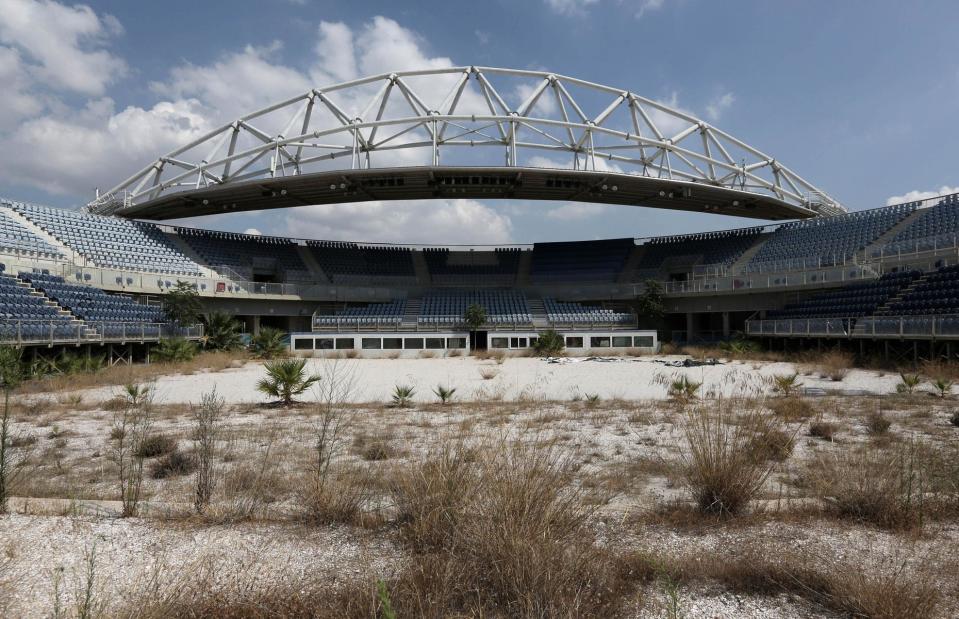
Associated Press/Alamy Stock Photo
Athens hosted the Summer Olympics in 2004 at a cost of at least $11.6 billion, or $19.3 billion (£15.3bn) in 2024 money. Mired in an economic crisis, Greek government officials have denied accusations that hosting the Olympics caused the nation’s fiscal fiasco – although the billion-dollar price tag certainly didn’t help matters.
Like many purpose-built venues and stadiums, the vast Olympic facilities were not built with the long term in mind.
Athens, Greece, 2004, cost: $19.3 billion (£15.3bn)
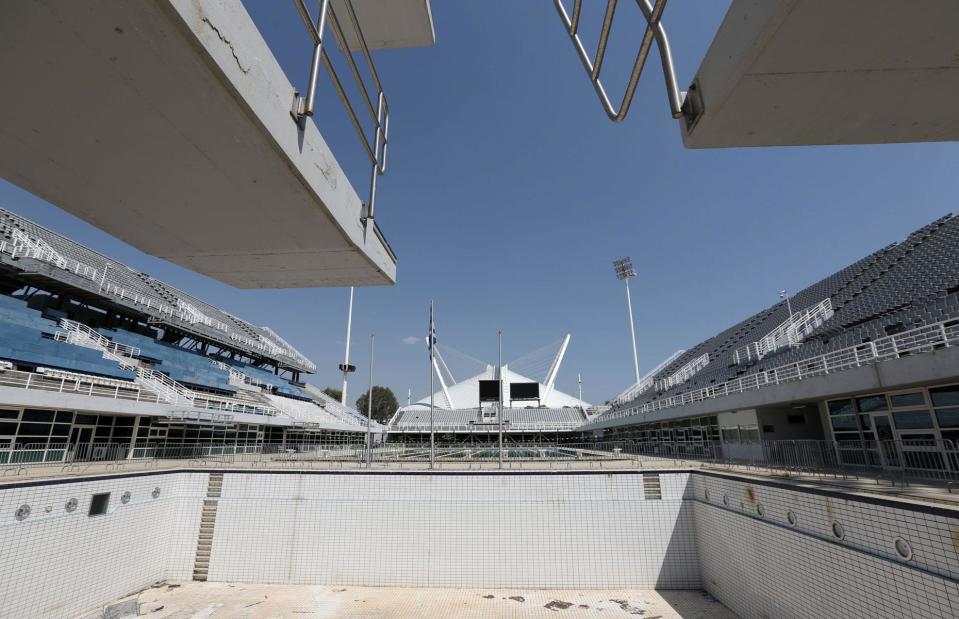
Associated Press/Alamy Stock Photo
Fast-forward to today and the vast majority of the venues lie empty, while the country is still paying back its debts. Without the state providing any real plan for what would happen to the venues after the Games, they've been left to fall into disrepair.
The aquatics centre has completely dried up, heaps of rubbish have been left in outdoor training pools, and monuments are covered in graffiti.
Athens, Greece, 2004, cost: $19.3 billion (£15.3bn)

Media Drum World/Alamy Stock Photo
Today, many of the facilities, including this canoe and kayak complex, are barren and decaying, with some overrun with weeds.
The Olympic baseball complex has since been used as a refugee camp, which was home to as many as 5,000 people before it was shut down in 2017. Other venues were used as COVID-19 vaccination centres but are used only sporadically today.
Rio de Janeiro, Brazil, 2016, cost: $17.3 billion (£13.7bn)

Buda Mendes/Getty Images
The honour of hosting the first South American edition of the Olympic Games cost Rio de Janeiro $13.2 billion, which amounts to around $17.3 billion (£13.7bn) today.
As well as the construction of 10 new arenas and sporting facilities, the Brazilian city also oversaw the repurposing of existing venues built in 2007 for the Pan-American Games. Several temporary structures along the beach were also erected.
While organisers highlighted that all new venues would have a long-term sustainable business plan, critics argued that the purpose-built facilities would be too large and expensive to maintain.
Rio de Janeiro, Brazil, 2016, cost: $17.3 billion (£13.7bn)

Buda Mendes/Getty Images
Just six months after the Games ended, the Olympic Village had become a ghost town. Disputes between the venue operators and the government over unpaid utility bills meant many newly constructed facilities were left abandoned and vulnerable to vandalism and looting.
Meanwhile, the rubble generated by the demolition of the city's temporary Olympic structures was left to rot. In 2017, federal prosecutor Leandro Mitidieri said of the venues: "They are white elephants today. What we are trying to look at here is how to turn this into something usable."
Rio de Janeiro, Brazil, 2016, cost: $17.3 billion (£13.7bn)

Allan Carvalho/NurPhoto/Alamy Stock Photo
The Olympic Park area stayed open to the public and has hosted concerts and other events, although many people have lamented the lack of maintenance.
In early 2020, a judge ordered the closure of the Olympic Park due to safety concerns, citing a lack of safety licenses. He said the park was "progressively battered by the lack of care", adding that it was "ready for tragedies." It was reopened again a fortnight later.
Beijing, China, 2008, cost: $58.4 billion (£46.2bn)
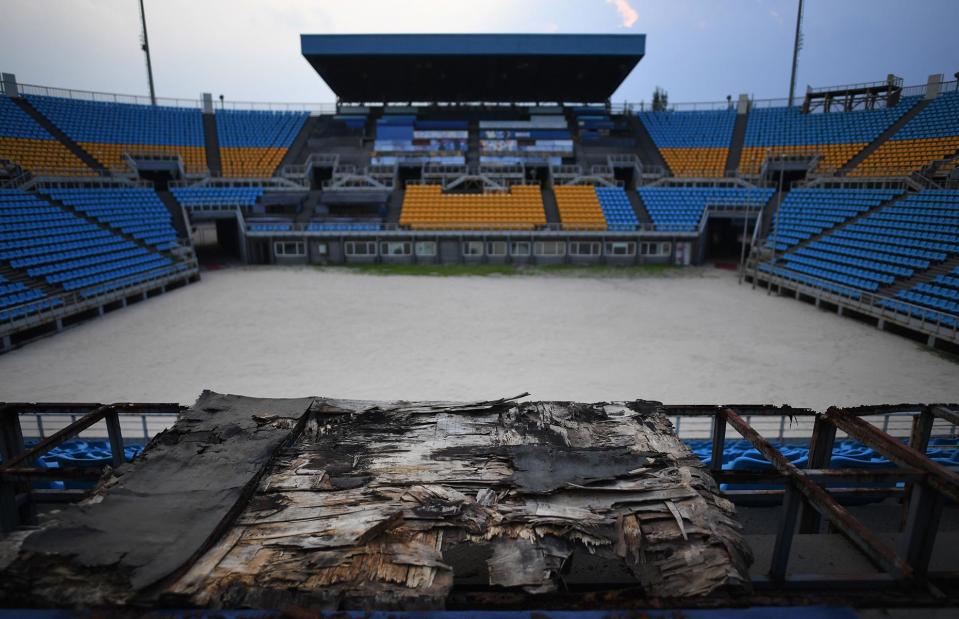
GREG BAKER/AFP/Getty Images
The 2008 Olympic Games in Beijing cost a staggering $40 billion, the equivalent of $58.4 billion (£46.2bn) in today's money. However, over a decade later, many of the venues are derelict.
The volleyball stadium (pictured) is filled with rotting wood, watersports arenas have run dry, and mascots lie abandoned.
Beijing, China, 2008, cost: $58.4 billion (£46.2bn)
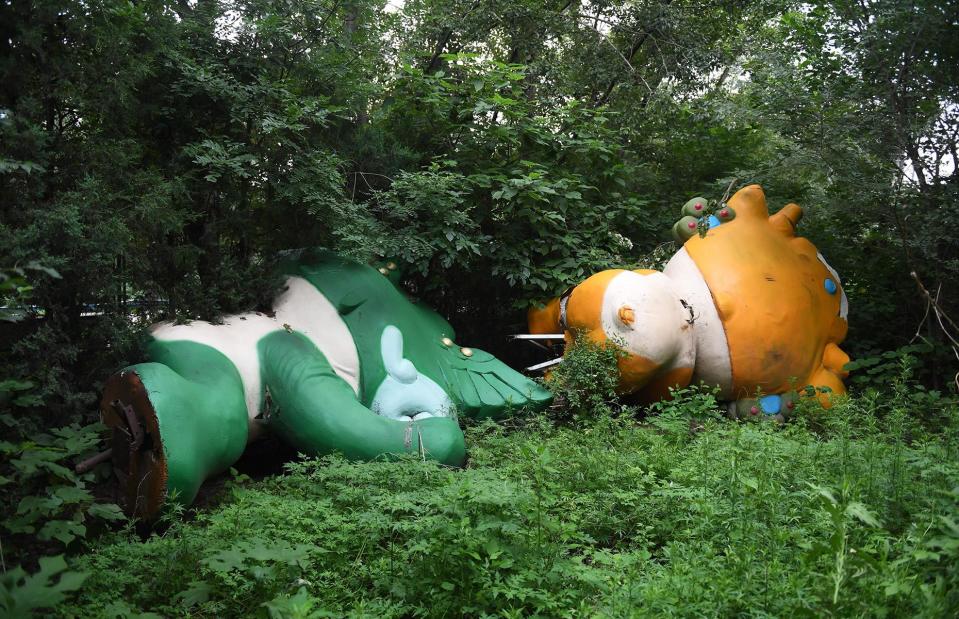
GREG BAKER/AFP/Getty
The two main venues, the National Stadium (also known as the Bird's Nest) and Water Cube Aquatics Centre, remain popular tourist attractions and were reused when the city hosted the 2022 Winter Olympic and Paralympic Games.
Yet the other abandoned and largely derelict facilities leave a bitter taste in the mouth for many. After an estimated two million residents were removed from their homes to clear space for the Games, many of them allegedly forcibly, the fact that the venues were left to wrack and ruin only adds insult to injury.
Beijing, China, 2008, cost: $58.4 billion (£46.2bn)

GREG BAKER/AFP via Getty Images
Left to rot, rust or even return to nature, the BMX track (pictured), the kayak course, and various other expensive structures have all been completely abandoned.
Sochi, Russia, 2014, cost: $66.4 billion (£51.2bn)

Ivanvislov/Shutterstock
Going over budget is pretty much a given when it comes to hosting the Olympics, but when it was Russia's turn to host the 2014 Winter Olympics in Sochi, it took things to a whole new level.
When Russia won its bid in 2007, the budget was set at $12 billion. Yet the consensus figure for the overall cost of the event is at least $50 billion, the equivalent of a staggering $66.4 billion (£51.2bn) in 2024 money.
Sochi, Russia, 2014, cost: $66.4 billion (£51.2bn)

Friedemann Kohler/dpa/Alamy Stock Photo
It was the largest Winter Olympics ever, with 88 nations participating and 2,873 athletes taking part in 98 events. Despite this, its legacy is mired in controversy, with the cost overruns blamed on corrupt government ties with oligarchs and allegations of migrant worker abuse.
While Sochi hosted some games during the 2018 FIFA World Cup, it's fair to say the money spent on the venues has not been recouped.
Sochi, Russia, 2014, cost: $66.4 billion (£51.2bn)

Panther Media GmbH/Alamy Stock Photo
Some of the money was spent on improving infrastructure in the region, including a new beltway to divert traffic around Sochi, improved paths around the city for people with disabilities, and new public transport.
However, the Olympic venues have undoubtedly become white elephants, with many facilities now struggling to attract sporting and music events. Russia's war in Ukraine has only exacerbated the problem.
Now discover more about Neom, the desert city that may never be finished
Updated by Matt Bradfield